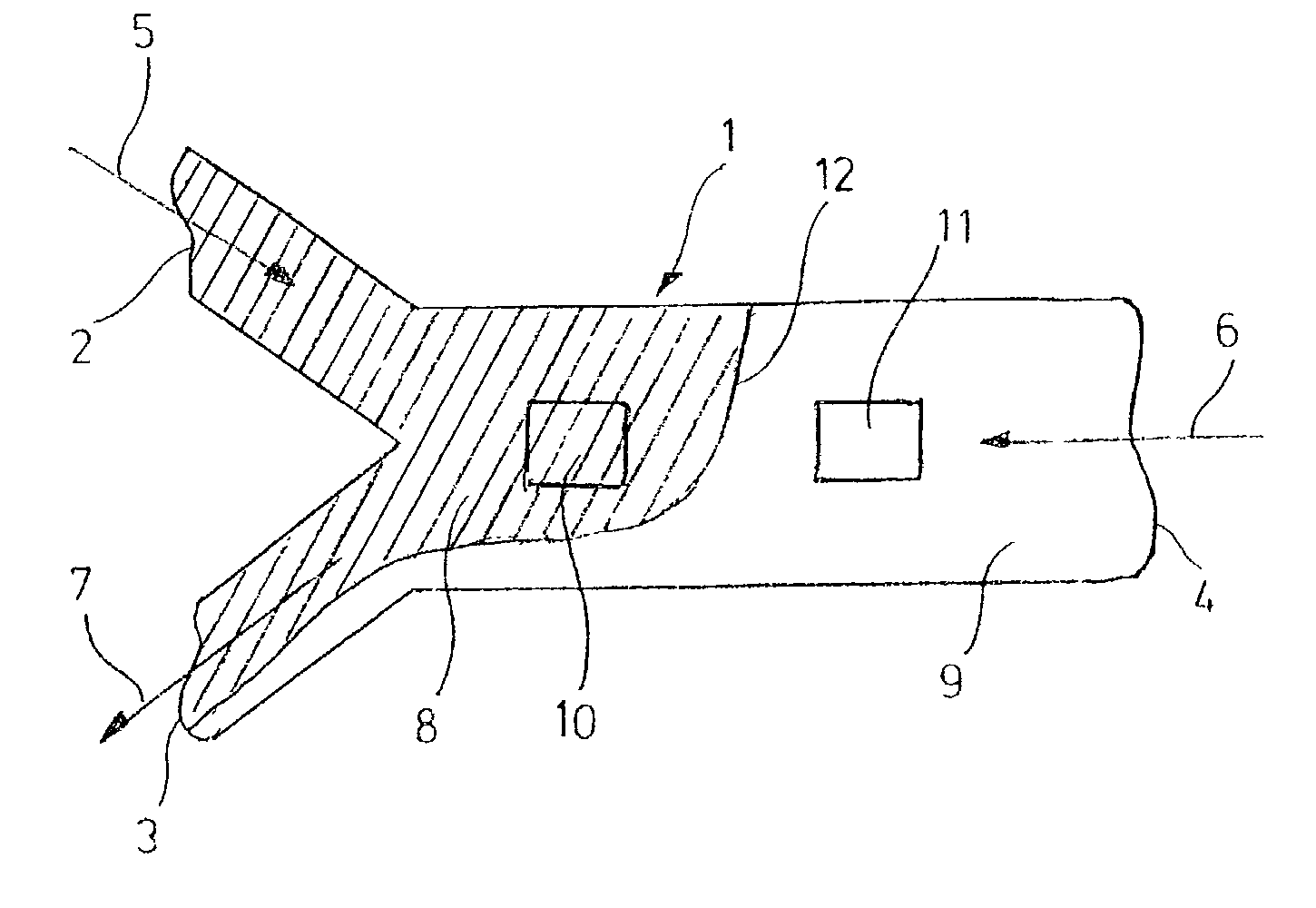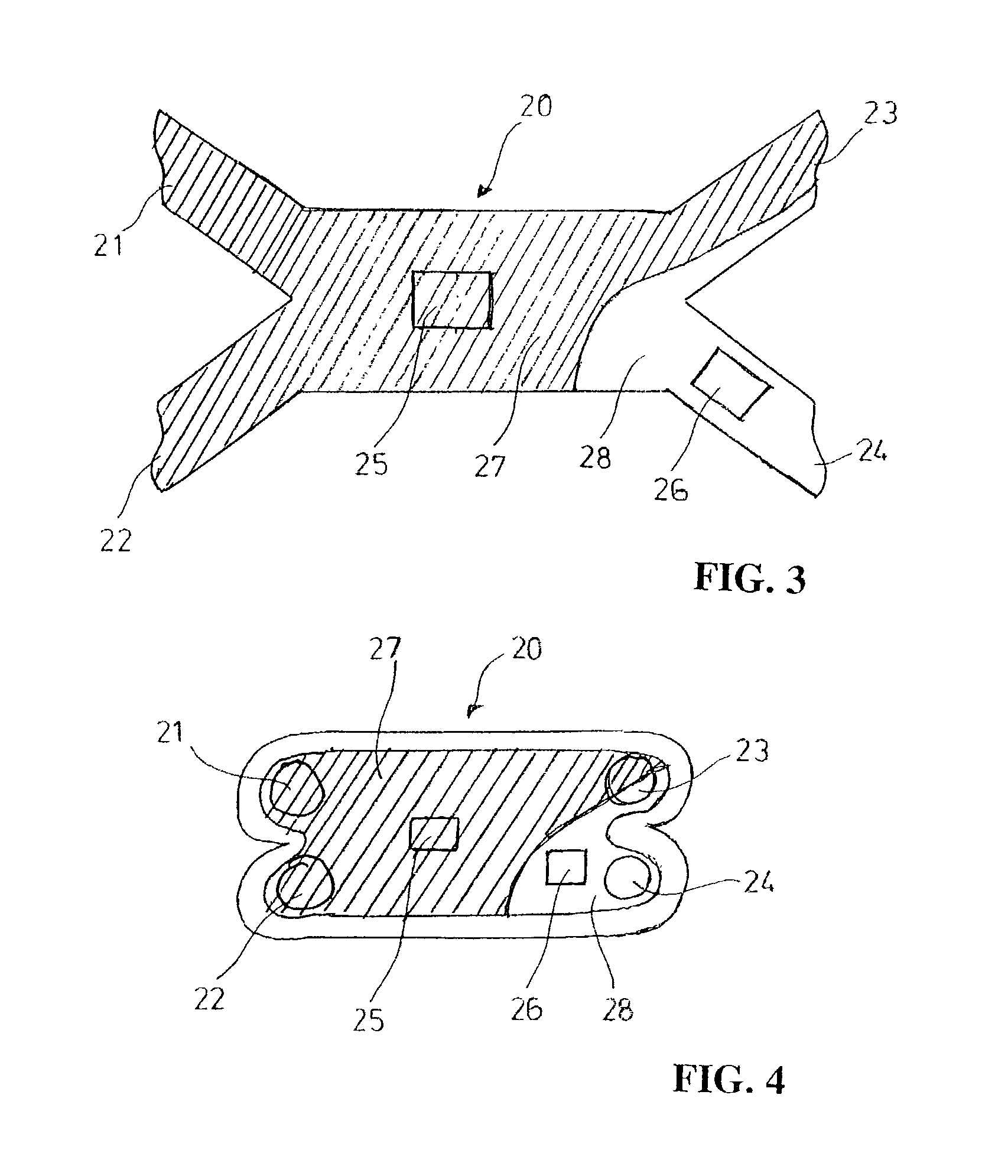Flow cell method
a flow cell and flow control technology, applied in chemical methods analysis, material testing goods, withdrawing sample devices, etc., can solve the problem of only being able to selectively contact a desired fluid with different areas of the sensing surfa
- Summary
- Abstract
- Description
- Claims
- Application Information
AI Technical Summary
Benefits of technology
Problems solved by technology
Method used
Image
Examples
example 1
[0063]Deactivation of an activated inlet area of a flow cell to increase the mass transport to a sensing area
[0064]A BIACORE S51® instrument (Biacore AB, Uppsala, Sweden) was used. The instrument includes a Y-channel flow cell of the type illustrated in FIGS. 5A to 5C. As sensor chip was used Sensor Chip CM5 (Biacore AB), which supports a gold surface with a covalently linked carboxymethyl-modified dextran polymer hydrogel. The optical system measures three detection spots located centrally on the sensing surface forming one channel wall of the flow cell.
[0065]1. Materials
[0066]Ligand: Biotin-jeffamine conjugate, Mw 374.5 (made in-house), 2 mM, 1.75 mg in 2386 μl of 10 mM borate, pH 8.5
[0067]Analyte: Biotin-antibody (from Biotin Kit, Biacore AB)
[0068]Coupling reagent: Amine coupling kit (Biacore AB), EDC / NHS (N-ethyl-N-dimethylaminopropylcarbodiimide and N-hydroxysuccinimide)
[0069]Drive buffer: PBS pH 7.2
[0070]Deactivating reagent: Ethanolamine
[0071]2. A. Sensitization of sensor chi...
PUM
| Property | Measurement | Unit |
|---|---|---|
| flow rate | aaaaa | aaaaa |
| flow rate | aaaaa | aaaaa |
| flow rates | aaaaa | aaaaa |
Abstract
Description
Claims
Application Information
 Login to View More
Login to View More - R&D
- Intellectual Property
- Life Sciences
- Materials
- Tech Scout
- Unparalleled Data Quality
- Higher Quality Content
- 60% Fewer Hallucinations
Browse by: Latest US Patents, China's latest patents, Technical Efficacy Thesaurus, Application Domain, Technology Topic, Popular Technical Reports.
© 2025 PatSnap. All rights reserved.Legal|Privacy policy|Modern Slavery Act Transparency Statement|Sitemap|About US| Contact US: help@patsnap.com



